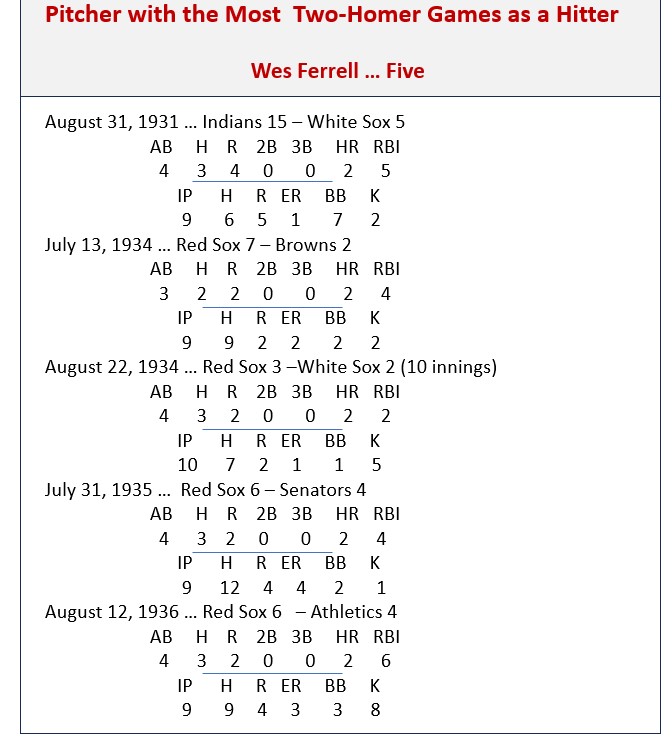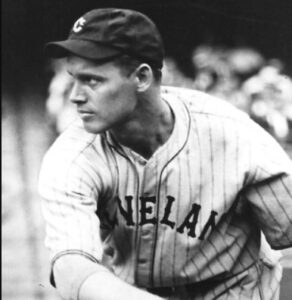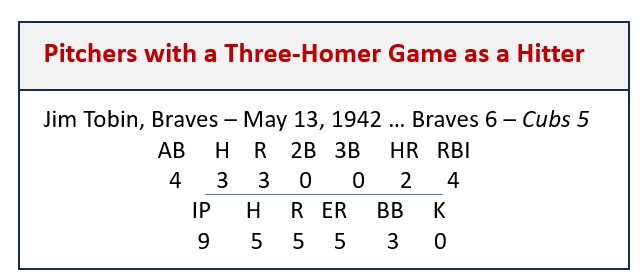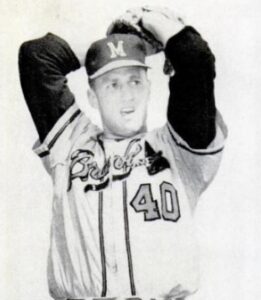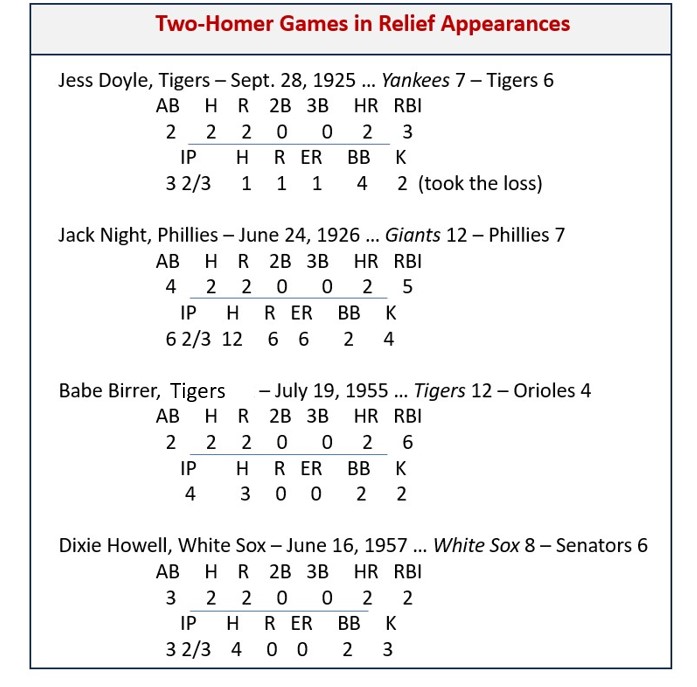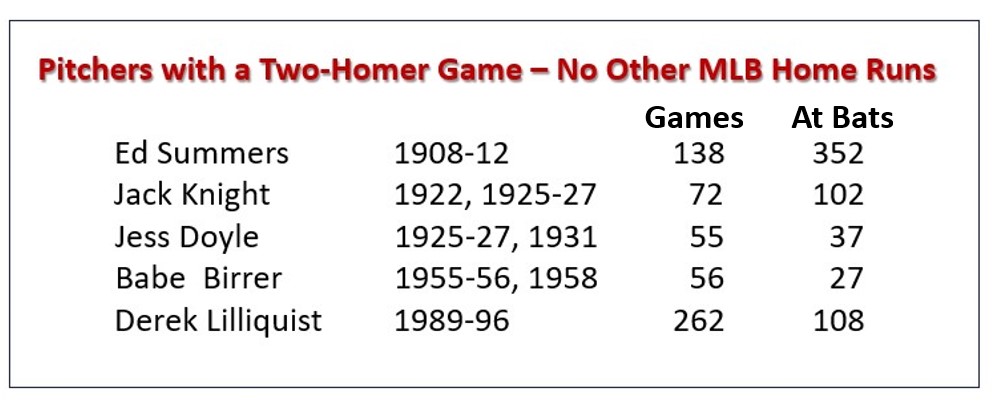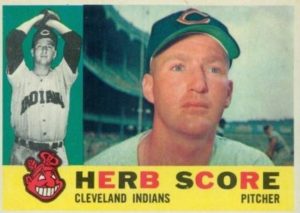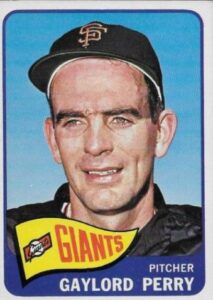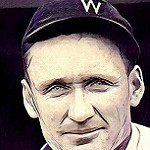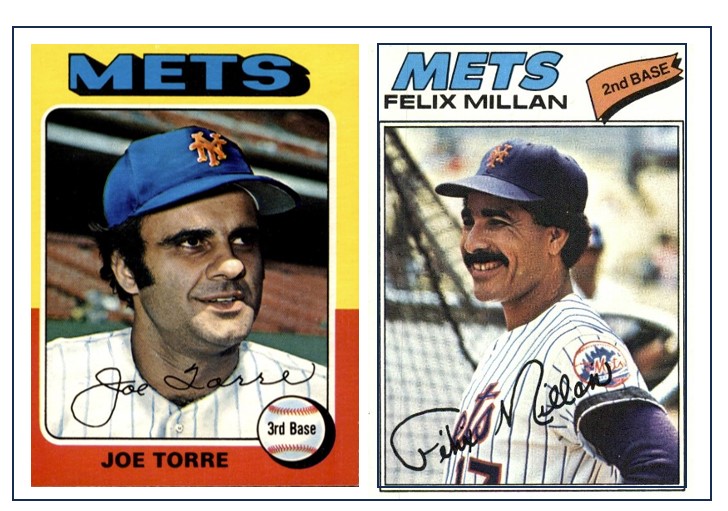Welcome to another of Baseball Roundtable’s “When I start looking into a topic one thing always seem to lead to another” posts. This one started out the “Where is the asterisk when you need it?” and ended up with a look at players who had multi-homer games when they also took the hill as a pitcher. This took me down a research rabbit hole that included 71 multi-homer games by 58 different pitchers – with names and credentials ranging from Babe Ruth and Shohei Ohtani to Garland Buckeye and Elon Hogsett (and a lot in between, like “Dons” Cardwell, Drysdale and Newcombe and even Phil Collins). But I’m betting ahead of myself.
Note: Given statistical accuracy and game formats, I am limiting myself to the Modern Era (post-1900). Also, not all Negro game stats (1920-48) have been fully documented and incorporated into the MLB record books.
Another Ruth/Ohtani Comparison
 Let me explain how this all started. Browsing through Baseball-Reference.com, I noted that, while Shohei Ohtani has had 16 multi-homer games in his seven MLB seasons (171 total homers), he has had only one two-homer game in a contest in which he also pitched. That came in a June 27, 2023, 4-2 Angels win over the White Sox. In that game, Ohtani hit his second home run in the bottom of the seventh inning – after being replaced on the mound in the top of the inning (remaining in the lineup at DH). So, technically, that separates him from players who hit two (or more) homers in a game while in the lineup as a pitcher. Perhaps not a big “difference,” but (for The Roundtable) a statistical “distinction.”
Let me explain how this all started. Browsing through Baseball-Reference.com, I noted that, while Shohei Ohtani has had 16 multi-homer games in his seven MLB seasons (171 total homers), he has had only one two-homer game in a contest in which he also pitched. That came in a June 27, 2023, 4-2 Angels win over the White Sox. In that game, Ohtani hit his second home run in the bottom of the seventh inning – after being replaced on the mound in the top of the inning (remaining in the lineup at DH). So, technically, that separates him from players who hit two (or more) homers in a game while in the lineup as a pitcher. Perhaps not a big “difference,” but (for The Roundtable) a statistical “distinction.”
This led me to look for any other pitchers/players who also had a multi-homer game in which at least one homer came after they had been pulled from the mound. I found one. Babe Ruth, who had 72 multi-homer games, had just one multi-homer contest in which he also pitched. That came on June 13, 1921, when Ruth made a rare start on the mound for the Yankees. Ruth homered to lead off the third inning (off Howard Ehmke). He was pulled from the mound in the top of the sixth, with two-on, no outs and the Yankees up 10-4. But, he didn’t’ go to the dugout. He moved to CF. In the bottom of the seventh, now-centerfielder Ruth hit his second homer of the game (a two-run shot of Ehmke). So, like Ohtani, Ruth’s sole game in which he pitched and hit two home-runs also featured one homer after he left the mound. The Yankees, by the way, prevailed 13-8.
______________________________
For those who like to know such things.
In 1918, when Babe Ruth won 13-7, 2.22 for the Red Sox and won his first home run title (with 11 dingers), he hit two homers as a pitcher, six as a centerfielder, two as a first baseman and one as a left fielder. In 2023, when Shohei Ohtani went 10-5, 3.14 and won the AL home run title with 44, he hit seven home runs in games in which he pitched (four of those while he was still in the game at pitcher). He was in the lineup as DH for all 44 long balls.
________________________________
Now for some additional pitcher’s multi-homer game tidbits.
A Handful of Multi-Homer Games
No pitcher had more multi-homer games than Wes Ferrell with five. (Five is officially a handful, isn’t it?)
In his fifteen-season MLB career (1927-41 … Indians, Red Sox, Nationals, Yankees. Dodgers, Braves), Ferrell went 193-128, 4.04 – with six seasons of 20 or more wins – leading the AL with 25 wins (14 losses) in 1935. As a hitter, he went .280-38-208 in 548 games. Ferrell, notably, appeared in 157 games as a pinch-hitter and 13 in left field. His 37 home runs as a pitcher are a record for MLB moundsmen (he hit one homer as a pinch hitter).
Other pitchers with multiple, multiple-homer games are:
Don Newcombe 3
Jack Harshman 2
Dick Donovan 2
Tony Cloninger 2
Lew Burdette 2
Rick Wise 2
Red Ruffing 2
Pedro Ramos 2
_________________________________________
Thirteen Can Be a Lucky Number
On May 13, 1942, as the Braves topped the Cubs 6-5, Braves’ pitcher Jim Tobin became the first (still only) modern-era pitcher to hit three home runs in a single game. Tobin hit a solo shot leading off the fifth (off Jake Mooty) to tie the game at two; a solo shot off Mooty to open the seventh (with the Braves trailing 4-2); and a two-run shot in the eighth, breaking a 4-4 tie, off Hiram Bithorn. Tobin went the distance in the game, giving up five runs (three earned) on five hits and three walks.
Tobin pitched in nine MLB seasons (1937-45 … Pirates, Braves, Tigers), going 105-112, 3.44 (287 games/227 starts). As a hitter, he went .230-17-102 in 396 games. He appeared in 92 games as a pinch-hitter and four at 1B.
_____________________________________
Come On Home, Boys
The Braves’ Tony Cloninger had a pair of multi-homer games, but the one he enjoyed on July 3, 1996 (in a 17-3 win over the Giants in San Francisco) was a record-setter. On that day, he not only racked up his second multi-homer game of the season, but also became the first and still only pitcher to hit two grand slams in a game and set the (still-standing) MLB record for RBI in a game by a pitcher at nine. Here was Cloninger’s game:
First Inning – Grand Slam off Bob Priddy (the Braves scored seven runs in the top of the first);
Third inning – Ground out to short off Priddy;
Fourth Inning – Grand Slam off Ray Sadecki;
Sixth Inning – Flyout to left off Sadecki;
Eighth Inning – RBI single off Sadecki.
Cloninger pitched a complete-game, seven-hitter (three runs, two walks, five whiffs).
Notably, Cloninger’s two-home game came just 17 days after he enjoyed a two-homer contest in a 17-1 Braves’ win over the Mets.
___________________________________
Pitchers with Two Multi-Homer Games in a Single Season
Wes Ferrell, Red Sox 1934
Don Newcombe, Dodgers 1955
Jack Harshman, Orioles 1958
Dick Donovan, Indians 1962
Tony Cloninger, braves 1966
Rick Wise, Phillies 1971
____________________________________________
Cloninger pitched in 12 MLB seasons (1961-72 … Braves, Reds, Cardinals), going 113-97, 4.07. His best season was 1965, when he went 24-11, 3.29 for the Braves. As a hitter, he went .192-11-67 in 366 games.
Inquiring Minds Want to Know
After retiring from MLB, Tony Cloninger became a world-class, slow-pitch softball player. In 1978 (six years after his MLB retirement), playing for the United States Slow-Pitch Softball Association’s Slow-Pitch World Series Champion Howard & Carroll team, Cloninger was selected as the third baseman on the Series All-World Team.
_______________________________
Wisely Done, Rick
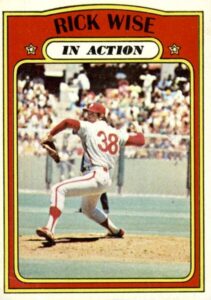 The Roundtable does like MLB unicorns – and, like Cloninger’s two-Grand Slam game, this one. On June 23, 1971, the Phillies’ Rick Wise became the first (and still only) MLB pitcher to hit two home runs and throw a no-hitter in the same game. Wise shut down the Reds in Cincinnati by a 4-0 score – giving up no hits, walking one and fanning three. He also rapped a two-run homer (off Ross Grimsley) in the fifth inning and a solo shot off Clay Carroll in the eighth. Only a one-out, sixth-inning walk (to the Reds SS Dave Concepcion kept Wise from a perfect game on this day. And, consider the opposition. The Reds’ Lineup included the likes of: RF Pete Rose; CF George Foster; 1B Lee May; C Johnny Bench; and 3B Tony Perez.
The Roundtable does like MLB unicorns – and, like Cloninger’s two-Grand Slam game, this one. On June 23, 1971, the Phillies’ Rick Wise became the first (and still only) MLB pitcher to hit two home runs and throw a no-hitter in the same game. Wise shut down the Reds in Cincinnati by a 4-0 score – giving up no hits, walking one and fanning three. He also rapped a two-run homer (off Ross Grimsley) in the fifth inning and a solo shot off Clay Carroll in the eighth. Only a one-out, sixth-inning walk (to the Reds SS Dave Concepcion kept Wise from a perfect game on this day. And, consider the opposition. The Reds’ Lineup included the likes of: RF Pete Rose; CF George Foster; 1B Lee May; C Johnny Bench; and 3B Tony Perez.
Wise played in 18 MLB seasons (1964, 1966-82 … Phillies, Cardinals, Red Sox, Indians, Padres), going 188-181, 3.69. He won 15 or more games in six seasons. As a hitter he went .195-15-66 in 341 games.
Let’s get this Party Started
Another unicorn. On April 2, 2017, the Giants’ Madison Bumgarner became the first (still only) pitcher to hit two home runs on Opening Day. It came against the Diamondbacks (in Arizona) and MadBum homered to lead off the fifth inning (off Zack Greinke) and went deep again (a solo shot with one out, that gave the Giants a 4-3 lead) in the seventh off Andrew Chapin. He also drew a seven-pitch walk in the second inning. Bumgarner got a no-decision in the game – going seven innings, giving up three runs on six hits, while walking none and fanning 11.
In 15 MLB seasons (2009-2023 … Giants, Diamondbacks), Bumgarner went 134-124, 3.47 and was an All Star four times. As a hitter his stat line is .172-19-65 in 313 games.
Side Note; April 2 is the earliest date for a two-homer game by a pitcher. The other pitcher to do it? Zack Greinke (who opposed Bumgarner on Opening Day 2017). Exactly two years later, in the Diamondbacks sixth game of the season, Grienke hit a pair of homers and drove in four runs as his D-backs topped the Padres 8-5 in San Diego.
Whiff N’Poof
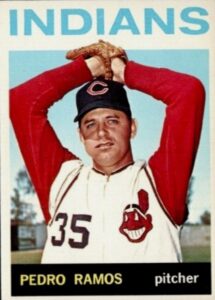 No pitcher fanned more batters in a two-homer game than the Indians’ Pedro Ramos. On July 31, 1963, in a start against the Angels (in Cleveland), Ramos went two-for-four with a pair of solo home runs. He also fanned 15 Angels batters in a 9-5 win.
No pitcher fanned more batters in a two-homer game than the Indians’ Pedro Ramos. On July 31, 1963, in a start against the Angels (in Cleveland), Ramos went two-for-four with a pair of solo home runs. He also fanned 15 Angels batters in a 9-5 win.
____________________________________________
Adding Insult to Injury
In the sixth inning of the Indians 9-5 win over the Angels on July 31, 1963, the Indians tied an MLB record by bashing four consecutive home runs – and Pedro Ramos was part of that record. The home run string began with two out in the seventh inning and included (in order) 2B Woodie Held, P Pedro Ramos, LF Tito Francona and SS Larry Brown.
_______________________________________
Ramos logged two two-homer games in his career – with wildly different pitching lines. One was a three-hit shutout, in which he struck out just one batter. In the second, he gave up five runs on 11 hits and two walks, but fanned 15.
Ramos pitched in 15 MLB seasons (1955-67, 1969-70 … Senators/Twins, Indians, Yankees, Phillies, Pirates, Reds, new Senators). He went 117-160, 4.08 as a pitcher and .155-15-56 in 696 games as a hitter.
Wrong Side of the Ledger
Pedro Ramos is one of only two MLB pitchers to lead his league in losses four consecutive seasons. Ramos (with the Senators) led the AL in losses from 1958 through 1961, with records of 14-18, 13-19, 11-18 and 11-20. Phil Niekro matched that record in the NL, leading the league in losses from 1977 through 1980, going 16-20, 19-18, 21-20 and 15-18. (In 1979, Niekro’s 21-20 record led the NL in wins and losses.) The only other player to lead his league in losses four times is Bobo Newsom (who led the AL in losses I 1934, 1935, 1941 and 1945).
Oh, What A Relief It Is
Only four relievers have notcheda two-homer game as hitter.
Babe Birrer’s two-homer game (July 19, 1955) in relief may be the most interesting. While he didn’t enter the game until the sixth inning, Birrer drove in six of the Tiger’s 12 runs in a 12-4 win over the Orioles (in Detroit). In his two plate appearances, Birrer:
- Poked a two-out, three-run homer in the bottom of the sixth (off George Zuvernick);
- Hit another three-run shot in the eighth (off Art Schallock).
Those, by the way, were the only home runs and RBI in Birrer’s short MLB career (1955-56, 1958 … Tigers, Orioles, Dodgers). He appeared in 56 games, going 4-3, 4.36 in 119 2/3 innings. As a hitter, he went .259-2-6 in 27 at bats.
_____________________________________
Teamwork
The Teams with the most pitchers multi-homer games in their history are:
Indians – Eight: Pedro Ramos (2); Dick Donovan (2); Bob Lemon; Mel Harder; Wes Ferrell; Garland Buckeye.
Phillies – Eight: Rick Wise (2); Randy Wolf; Robert Person; Randy Lerch; Larry Christenson; Phill Collins; Jack Knight.
My Favorite Names of Two-Homer Pitchers – Garland Buckeye, Elon Hogsett and Phill Collins (No, not that Phil Collins).
Gotta love Garland Buckeye and Elon Hogsett – pitchers with two-homer games on September 10, 1925 (for the Indians) and August 31, 1932, respectively.
Buckeye, a hefty 6’-260-pound southpaw went 30-39, 3.91 over five MLB seasons (1918, 1925-28 … Nationals, Indians Giants). As a batter, he went .230-5-23 in 108 games. Garland’s best season was 1925, when he went 13-8, 3.65 for the Indians. He drove in five runs in his two-homer game.
Buckeye’s size made him seem more suited for football – and he suited up at center/guard for the Chicago Tigers of the American Professional Football Association (forerunner to the NFL) in 1920, with the Chicago Cardinals (APFA and NFL from 1921 through 1924) and the American Football League Chicago Bulls in 1926.
Hogsett was also a southpaw and he enjoyed a 11-season MLB career (1929-38, 1944 … Tigers, Browns, Nationals) – going 63-87, 5.02 on the mound (as a starter and reliever (114 starts/216 relief appearances). As a hitter, he was .226-6-27 in 339 games. In his two-homer game, he went three-for-three (two homers and a single), with three RBI.
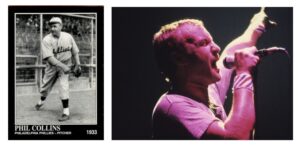
Phil Collins Photo: Philippe Roos from Strasbourg, CC BY-SA 2.0 <https://creativecommons.org/licenses/by-sa/2.0>, via Wikimedia Commons
Then there is Phil Collins. No not the Genesis/Grammy-winning Phil Collins. This Phil Collins had an eight-season MLB career (1923, 1929-35 … Cubs, Phillies, Cardinals) – going 80-85, 4.66 – and four-times winning 12 or more games in a season. On July 22, 1930, Collins started for the Phillies (makes sense if your name is Phil) against the pirate in Philadelphia. He went three-for-four at the plate, with two homers, a single and four RBI. He also tossed a complete game (12 hits, five runs, six walks, three whiffs) in the Phillies 11-5 win. Over his career, Collins hit .193-4-44 in 322 games.
MLB Pitchers with Three-Homer Games (Modern ERA)
Jim Tobin, Braves May 13, 1942
MLB Pitchers with Two-Homer Games (Modern Era)
Ed Summers, Tigers Sept. 17, 1910
Ed Willet, Tigers June 30, 1912
Jim Shaw, Nationals May 2, 1919
Babe Ruth, Yankees June 13, 1921
Art Nehf, Giants July 29, 1924
Tony Kaufmann, Cubs July 4, 1925
Garland Buckeye, Indians Sept. 10, 1925
Jess Doyle, Tigers Sept. 28, 2925
Jack Knight, Phillies June 24, 1926
Phil Collins, Phillies July 22, 1930
Red Ruffing, Yankees Sept. 18, 1930
Wes Ferrell, Indians August 31, 1931
Elon Hogsett, Tigers August 31, 1932
Hal Schumacher, Giants April 24, 1934
Wes Ferrell, Red Sox July 13, 1934
Wes Ferrell, Red Sox August 22, 1934
Wes Ferrell, Red Sox July 31, 1935
Mel Harder, Indians July 31, 1935
Red Ruffing, Yankees June 17, 1936
Wes Ferrell, Red Sox August 12, 1936
Elden Auker, Tigers August 14, 1937
Jack Wilson, Red Sox June 16, 1940
Spud Chandler, Yankees July 26, 1940
Bill Lee, Cubs May 7, 1941
Bucky Walters, Reds May 20, 1945
Dave Koslo, Giants July 7, 1949
Bob Lemon, Indians July 24, 1949
Ben Wade, Dodgers July 6, 1952
Don Newcombe, Dodgers April 14, 1955
Don Newcombe, Dodgers May 30, 1955
Jim Hearn, Giants July 9, 1955
Babe Birrer, Tigers July 19, 1955
Don Newcombe, Dodgers Sept. 19, 1956
Dixie Howell, White Sox June 16, 1957
Billy Hoeft, Tigers July 14, 1957
Lew Burdette, Braves August 13, 1957
Lew Burdette, Braves July 10, 1958
Jack Harshman, Orioles July 16, 1958
Don Drysdale, Dodgers August 23, 1958
Jack Harshman, Orioles Sept. 23, 1958
Don Cardwell, Cubs Sept. 2, 1960
Glen Hobbie, Cubs July 2, 1961
Milt Pappas, Orioles August 27, 1961
Dick Donovan, Indians May 18, 1962
Pedro Ramos, Indians May 30, 1962
Dick Donovan, Indians August 31, 1962
Pedro Ramos, Indians July 31, 1963
Earl Wilson, Red Sox August 16, 1965
Tony Cloninger, Braves June 16, 1966
Tony Cloninger, Braves July 3, 1966
Jim Rooker, Royals July 7, 1969
Rick Wise, Phillies June 23, 1971
Rick Wise, Phillies August 28, 1971
Fergie Jenkins, Cubs Sept. 1, 1971
Sonny Siebert, Red Sox Sept. 2, 1971
Larry Christenson, Phillies Sept. 5, 1976
Randy Lerch, Phillies Sept. 30, 1978
Walt Terrell, Mets August 6, 1983
Jim Gott, Giants May 12, 1985
Derek Lilliquist, Braves May 1, 1990
Darren Driefort, Dodgers August 8, 2000
Mike Hampton, Rockies June 5, 2001
Robert Person, Phillies June 2, 2002
Randy Wolf, Phillies August 11, 2004
Dontrelle Willis, Marlins Sept. 20, 2006
Micah Owings, Diamondbacks August 18, 2007
Noah Syndergaard, Mets May 11, 2016
Madison Bumgarner, Giants April 2, 2017
Zack Greinke, Diamondbacks April 2, 2019
Shohei Ohtani, Angels June 27, 2003
Primary Resources: Baseball-Reference.com; Baseball-Almanac.com
Baseball Roundtable – Blogging Baseball Since 2012.

 Baseball Roundtable is on the Feedspot list of the Top 100 Baseball Blogs. To see the full list, click here.
Baseball Roundtable is on the Feedspot list of the Top 100 Baseball Blogs. To see the full list, click here.
Baseball Roundtable is also on the Anytime Baseball Supply Top 66 Baseball Sites list. For the full list, click here.
I tweet (on X) baseball @DavidBaseballRT
Follow Baseball Roundtable’s Facebook Page here. More baseball commentary; blog post notifications.
Member: Society for American Baseball Research (SABR); Negro Leagues Baseball Museum; The Baseball Reliquary.
P1029
